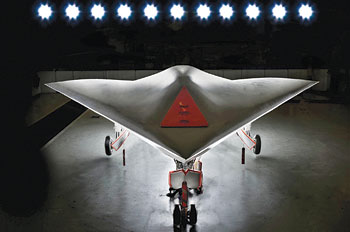INDIAN ARMED FORCES CHIEFS ON OUR RELENTLESS AND FOCUSED PUBLISHING EFFORTS

The insightful articles, inspiring narrations and analytical perspectives presented by the Editorial Team, establish an alluring connect with the reader. My compliments and best wishes to SP Guide Publications.

"Over the past 60 years, the growth of SP Guide Publications has mirrored the rising stature of Indian Navy. Its well-researched and informative magazines on Defence and Aerospace sector have served to shape an educated opinion of our military personnel, policy makers and the public alike. I wish SP's Publication team continued success, fair winds and following seas in all future endeavour!"

Since, its inception in 1964, SP Guide Publications has consistently demonstrated commitment to high-quality journalism in the aerospace and defence sectors, earning a well-deserved reputation as Asia's largest media house in this domain. I wish SP Guide Publications continued success in its pursuit of excellence.
- Indian Air Force Aims for Full Indigenous Inventory by 2047 — Air Chief Marshal A.P. Singh
- General Upendra Dwivedi takes over as the Chief of the Army Staff
- Rajnath Singh assumes charge as Defence Minister for the second consecutive term
- Admiral Dinesh K. Tripathi assumes Command of the Indian Navy as 26th Chief of the Naval Staff
- Prime Minister witnesses 'Bharat Shakti' – a Tri-Services Firing and Manoeuvre Exercise in Pokhran, Rajasthan
BAE's Taranis UCA to fly in spring

Taranis, an unmanned combat aircraft, has been built for the British military is to undergo its first ever test flight later this year.
It can fly faster than the speed of sound, cannot be detected by radar and has no pilot. This is the new robotic plane that will become the next-generation of front line bombers for the British military.
The drone, which is named after the Celtic god of thunder, has been designed to fly intercontinental missions to attack targets and can automatically dodge incoming missiles.
The aircraft, which has cost £125 million to build, is intended to be the first of a new generation of aeroplanes that will reduce the need to risk human lives on long, dangerous missions. It is to be flown for the first time in a series of tests over the Australian outback in the spring in an attempt to demonstrate the technology to military chiefs.
Currently the Royal Air Force uses Tornado GR4 bombers as its front line strike aircraft, although the Typhoon Eurofighter is expected to replace it in the coming years. Remote controlled drones such as Reaper are also used by the Ministry of Defence and US military to attack targets.
But the Taranis is expected to provide a prototype of a new kind of bomber that will replace piloted planes and the current drones. With a shape more similar to the US B-2 Stealth bomber, it intended to fly automatically using an on-board computer system to perform manoeuvres, avoid threats and identify targets. Only when it needs to attack a target will it seek authorisation from a human controller.
Nigel Whitehead, Group Managing Director of programmes at BAE Systems which has been developing Taranis, said the new drone could change the way aircraft are used by the MoD in the future, which currently uses manned planes for combat missions.
He said: “I think that the Taranis programme will be used to inform the UK MoD thinking, regarding the make up for the future force mix. I anticipate that the UK will chose to have a mix of manned and unmanned frontline aircraft. This decision will have a major impact on the future of the UK military.”





